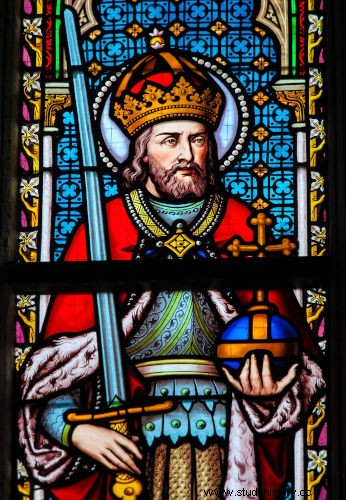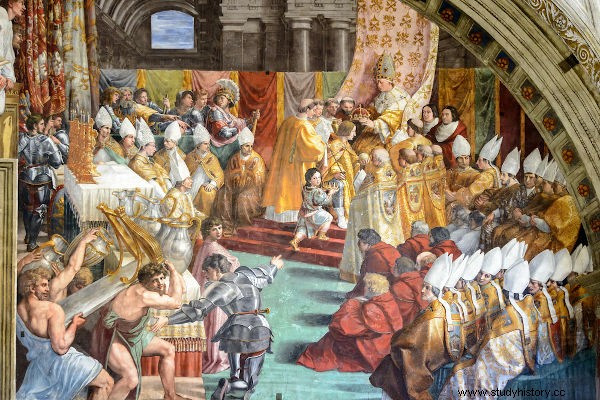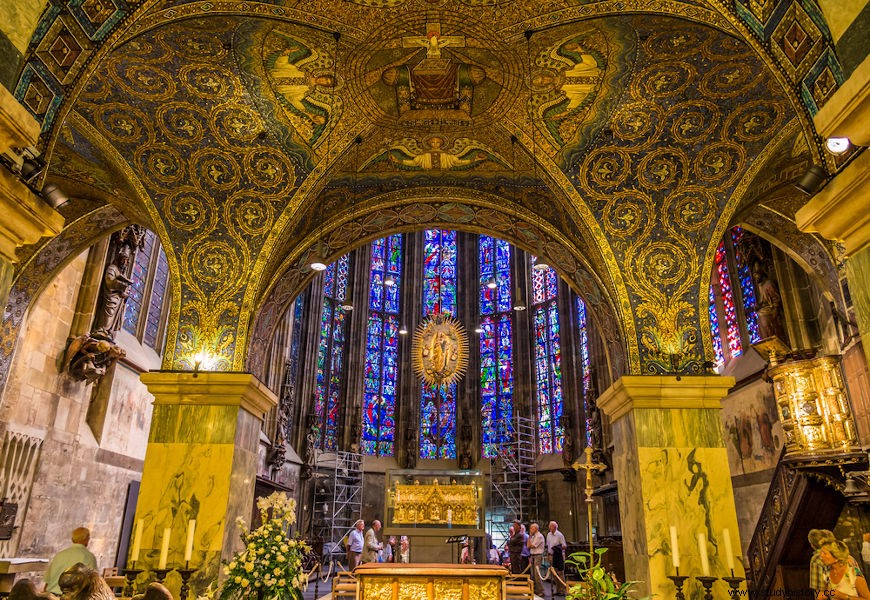Empire Carolingian it is how we know the period of the Kingdom of the Franks in which the Carolingian Dynasty existed. This dynasty ascended to the Frankish throne from 751, when Pepin the Short was crowned king, and lasted until the end of the 10th century, when the Carolingians lost the throne to a new dynasty.
Of all this period, Charlemagne's reign is by far the most expressive, extending from 768 to 814. Appointed Emperor of the West during this period, Charlemagne promoted a series of reforms in the Kingdom of the Franks and managed to expand its territories across Central Europe.
Login also :What were cities like in the medieval period?
Context of the Carolingian Empire

The Carolingian Empire was a continuation of the Kingdom of the Franks, and the differential of this period is that the throne was in the hands of the Dynasty Carolingian . The Carolingians, therefore, were Franks, and these people settled in the region of Gaul during the final phase of the Western Roman Empire. The Franks were given more prominence as the only Germanic people who managed to establish a lasting kingdom in Europe.
Historians consider the Carolingian Empire to be an attempt to recreate the Western Roman Empire because one of its great emperors sought to secure the support of Rome so that his power would be recognized throughout Europe; he sought to expand his borders to establish a territorially vast empire; and used titles to reinforce his position of authority.
The beginning of the Carolingian Dynasty is related to the rise of Cucumber , the Brief to the Frankish throne in 751. This dynasty led the Franks until the end of the 10th century and suffered much territorial fragmentation after Louis the Pious died in 843. This fragmentation led to the Frankish territories forming the Kingdom of France , on the one hand, and the Holy Roman Empire , on the other.
Early Carolingian Dynasty
The Carolingian Dynasty grew out of figures known as palace butlers , a position held by a person who directly looked after the administration of the kingdom. In the first centuries of the Kingdom of the Franks, the throne was occupied by the Merovingians , but as time passed, these kings handed over many of their assignments to stewards.
These officials then amassed great power, gaining access to nobles and royal coffers, for example. This ceding of power to the stewards was purposeful, because many Merovingian kings were unwilling to take care of the administration of the kingdom. Thus, the stewards began to gain influence among the Frankish nobility, while the kings were weakened.
The last Merovingian kings were so insignificant to the kingdom that they became known as kings indolent . The key point for butlers to actually establish themselves as royal influences among the Franks came in the 8th century. In 732, the Franks fought the Muslims in the Battle of Poitiers, and that was the pivotal moment in Frankish history, because they were led by Carlos Martel , a palace butler.
The defeat of the Muslims put an end to his expansion across Europe and made Carlos Martel an influential man. He remained a butler for the rest of his life, but his son, Pepin the Short, fought for the Frankish throne. This happened because he got support from Pope Zechariah and the nobles to seize power.
In 751 he was crowned King of the Franks , ousting the Merovingians and starting the Carolingian Dynasty. The term “Carolingian” is derived from the name Charles (from Charles Martel), and the last Merovingian king was Childeric III .
Login also :How was trade reborn in Europe during the Middle Ages?
Charles the Great

Pepin the Short held the Carolingian throne until the year from 768, and after his death, the throne was succeeded by Carloman I and Charles the Great , both his sons. They were crowned together, each ruling over a part of the kingdom. Carloman I died in 771, and then Charlemagne unified the Carolingian territories under his command.
His reign spanned from 768 to 814 and was the most successful in Carolingian history. He promoted administrative and legal reforms and managed to territorially expand the Kingdom of the Franks. His government also contributed significantly to the structuring of the feudalism and the establishment of classic practices of the Middle Ages, such as suzerainty and vassalage .
As far as territorial expansion is concerned, we can say that Charlemagne was a king who promoted numerous wars to expand his kingdom. During his reign, in only two years (790 and 807) the Frankish troops did not engage in any kind of war. He followed his father's line of maintaining a strong>alliance with the Church of Rome , and during these expansions it performed conversions forced wherever he went.
Among Charlemagne's conquests, the main one was against the Lombards , a people who frequently attacked the lands of the Catholic Church in the Italian Peninsula. He also fought and defeated other peoples, such as Saxons , Britons and Avars, in different regions of Central Europe. The Muslims , in the Iberian Peninsula, were also targeted by him, but his success against them was much less expressive.
In any case, Charlemagne managed to form the largest kingdom in terms of territory in Europe, after the fragmentation of the Western Roman Empire. As a symbol of his power and representation of him as the successor of the Roman Emperors, he was named, by Pope Leo III, Emperor of the West, at 800.
As far as the administration of the kingdom is concerned, Charlemagne made many changes to the way he governed the Franks. As the power of kings was very fragile, he needed, somehow, to guarantee the loyalty of his nobles , and one of them was due to the relationships of suzerainty and vassalage.
For these relationships, he provided land to a nobleman and in return demanded his allegiance. Thus, if the king needed troops, for example, these nobles were obliged to provide them as part of the agreement. Within this relationship, the king was the suzerain and the nobles were the vassals. Furthermore, Charlemagne sought to reinforce his authority by other means.
The emperor liked to have his orders sent in written documents called capitularies , he implanted laws with application to the whole kingdom, and the territories given to his vassals, called counties , were monitored by “envoys of the lord” or missi dominici , a group of royal officials who monitored the work of the earls.

Charles the Great administered his kingdom largely from Aachen (now in Germany), where he had a grand palace built. There he encouraged the coming of poets and other artists and the literacy of his children and Carolingian nobles . Even on monetary matters, Charlemagne made changes as he tried to establish a single currency called denier , but this reform did not take off.
Login also :How did the Vikings view war?
Decay
Charlemagne's reign was the most prosperous of the Carolingians, and the succession of that dynasty was not as successful as he was in administering the kingdom. His son, Louis , the Pious, he succeeded to the throne in 814, but, as he did not have the same administrative capacity as his father, he ended up contributing to the weakening of the empire.
The Frankish territory was constantly attacked by Hungarians in the east and Vikings or Normans in the north, so over time its fragmentation was inevitable. In the late 10th century, what remained of Carolingian power was replaced by the rise of the Capetian Dynasty .
Image credits
[1] jorisvo and Shutterstock
[2] Viacheslav Lopatin and Shutterstock
[3] Takashi Images and Shutterstock
